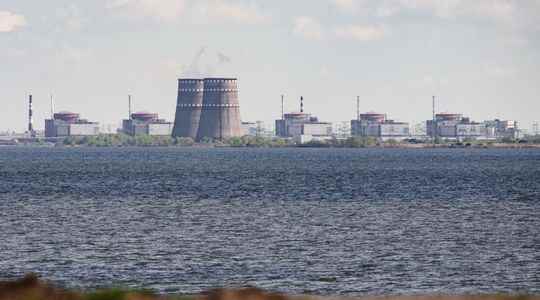Around Zaporijia, the tension does not go down. On Thursday August 25, fires caused by repeated bombardments caused the Ukrainian reactor complex to be disconnected, temporarily cutting it off from the Ukrainian national grid for the first time in nearly 40 years of operation, underlined Energoatom, the company of Ukrainian state. All reactors at the Zaporizhia nuclear power plant are still disconnected, officials report Friday, August 26.
This episode raised fears of a catastrophic accident in one of the largest nuclear power plants in Europe. And proves once again, if necessary, that the security environment around the site has deteriorated sharply.
- What exactly happened on Thursday?
At the heart of all concerns, the Zaporijia power plant found itself “totally disconnected” from the network after damage to the power lines, Energoatom announced. According to the Ukrainian operator, fires on the territory of the Zaporizhia thermal power plant, located near the nuclear power plant, in southern Ukraine, twice caused the disconnection of the last line connecting the site to the network electric. Three other power lines had already been removed earlier during the war.
Wednesday, August 24, the day before the incident, Petro Kotin, the president of EnergoAtom told the British daily The Guardian that Russian engineers had set up a plan to disconnect the site from the Ukrainian network in the event of damage to the lines.
- Why did we come close to disaster?
The disconnection of the plant – whose technicians working there were forced to fall back on diesel generators – could have jeopardized its entire cooling system. Hence the fear of a nuclear accident. During the outage on Thursday, the plant was still supplied with electricity by a remaining backup line connected to the nearby conventional power plant, Energoatom said. Three of these lines were in operation before the war, but two were cut. If all external connections fail, the plant must rely on diesel generators for power. On Friday August 26, the six reactors of the nuclear power plant were still disconnected from the Ukrainian electricity network, according to Reuters, citing the state nuclear company Energoatom.
“The world needs to understand what a threat this is: if the diesel generators didn’t turn on, if our station automation and staff weren’t working after the blackout, we would already be forced to overcome the consequences of the radiological accident”, launched, Thursday evening, Volodymyr Zelensky. “Russia has put the Ukrainians, like all Europeans, on the brink of a nuclear disaster”, was moved the Ukrainian president, calling for a “much faster” reaction from the International Agency for atomic energy (IAEA).
For its part, the IAEA said it had been “informed by Ukraine” of this loss of connection. “But (the plant) is currently in operation”, she underlined, confirming that it “remains connected” from “the neighboring thermal plant which can provide emergency electricity”.
- How did the Americans react?
American diplomacy warned, again on Thursday, that any Russian attempt to divert nuclear energy from Ukraine would be “unacceptable”. “The electricity it produces belongs by right to Ukraine and any attempt to disconnect the plant from the Ukrainian grid to redirect (electricity) to the occupied regions is unacceptable,” she insisted. The fear being that the Russians will confiscate the energy produced by the Zaporizhia power plant to supply the areas it occupies, in particular Crimea, annexed in 2014 and which suffers from a lack of electricity.
For his part, US President Joe Biden met with his Ukrainian counterpart to renew his support for him on the occasion of the Ukrainian national holiday on August 24. “This is a bittersweet anniversary, but I have made it clear that the United States will continue to support Ukraine and its people in their fight for their sovereignty,” the White House tenant wrote. in a tweet.
- In what context does this incident occur?
For weeks, Moscow and kyiv have accused each other of several bombings that targeted the site of this nuclear power plant, which has six reactors with a total capacity of 6,000 megawatts, which fell into the hands of Russian troops in March. Ukraine also accuses Russia of storing heavy weapons at this site and using it as a base for strikes on Ukrainian military positions.
The Russians deny having deployed such weapons there, claiming to have only units there to ensure its security. Russia in turn accuses the Ukrainian forces of having carried out drone strikes there. The UN has called for the establishment of a demilitarized zone around the plant to guarantee its security and to allow the dispatch of an international inspection mission. For the first time since civilian nuclear power has existed, a power station finds itself in the middle of an armed conflict between two States.
